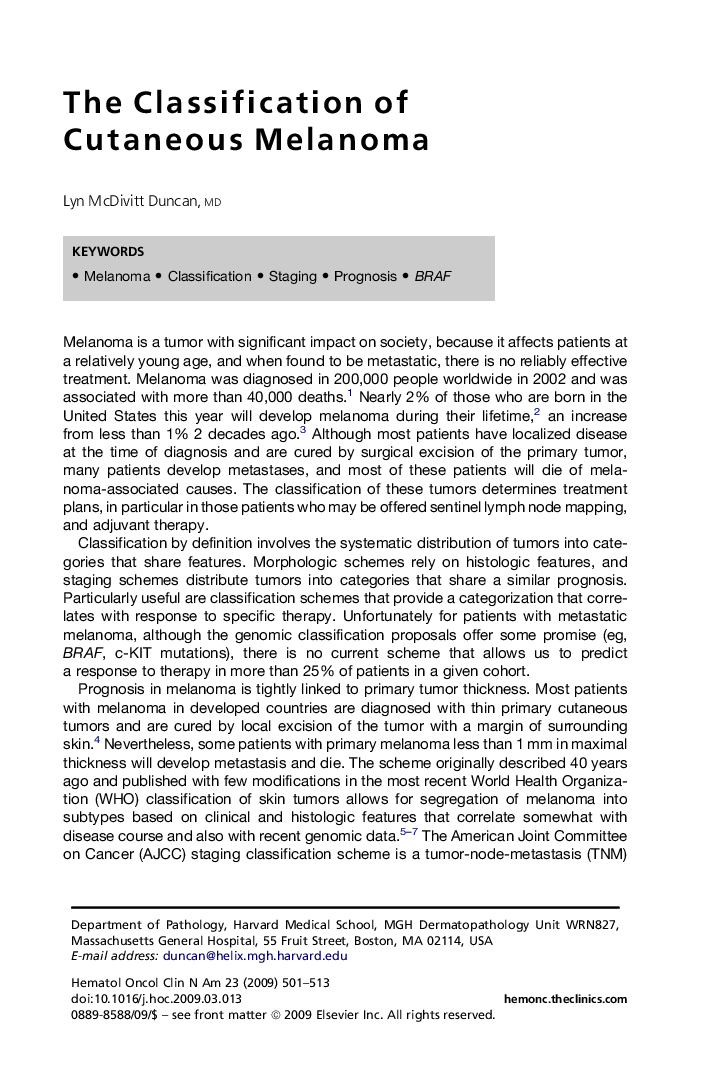| Article ID | Journal | Published Year | Pages | File Type |
|---|---|---|---|---|
| 3331844 | Hematology/Oncology Clinics of North America | 2009 | 13 Pages |
Forty years ago, a clinical and histological classification scheme and prognostic factors were described for cutaneous melanoma. This scheme included the subtypes superficial spreading, nodular and lentigo maligna, and prognostic factors including tumor thickness, ulceration, and mitotic activity. There have been some tweaks to the classification scheme, but these basic findings form the foundation for melanoma diagnosis and staging today. Currently, no molecular marker or target has proved reliably useful in the staging or treatment of melanoma. Measurement with a simple ruler serves as the basis for the staging of primary cutaneous melanoma, while the recognition of primary tumor mitotic activity and ulceration also remain significant factors. Recently, mutational analysis has revealed a correlation of activating mutations with the morphological descriptors from decades ago. Future classification schemes may have more power in predicting response to therapy by integrating specific genomic and intra-tumoral expression profiles with histologic findings.
